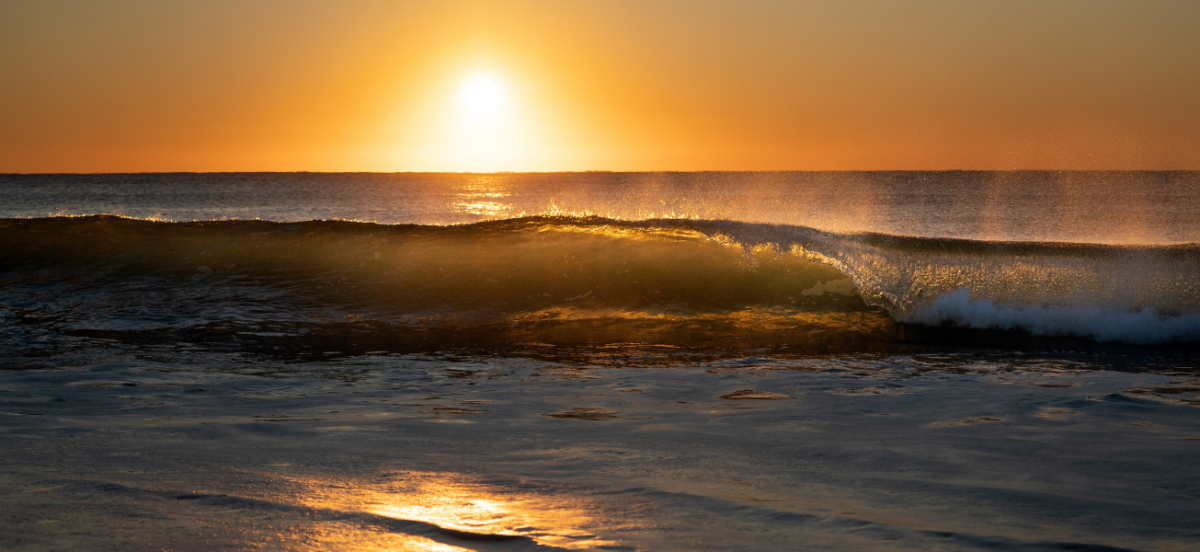We know shark nets are ineffective and outdated – but what are the effective alternatives for shark management?
The New South Wales (NSW) Government is already using effective, scientifically supported shark management measures that protect people while minimising harm to marine animals.
In this article we outline what these measures are, how they work, and whether they are effective. This information comes from the report we wrote with our friends at Sea Shepherd Australia – NSW Effective Shark Management for Your Community.
What does an effective shark management program look like?
An effective shark management program includes a combination of each of the following measures.
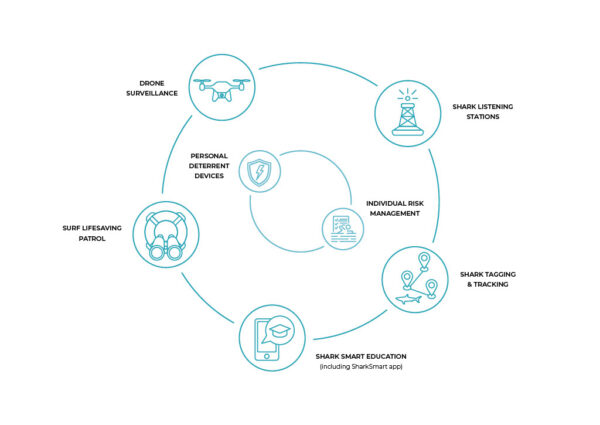
Drone surveillance
What are drones?
Drones are aerial vehicles that are fitted with camera surveillance to monitor stretches of coastline. They are manned by Surf Life Saving patrollers. They are used to spot sharks in the water from the air and to determine whether beaches need to be evacuated based on the level of risk present. Drones mounted with telecommunication capabilities are able to provide real time alerts to people in the water regarding the presence of ocean hazards, including sharks.
In New South Wales, drone surveillance is run in partnership with Surf Life Saving NSW and local Surf Life Saving clubs. They are used during normal patrol hours by Surf Life Saving patrollers. They have a minimum of 2 flights per hour with each flight lasting 10-15 minutes.
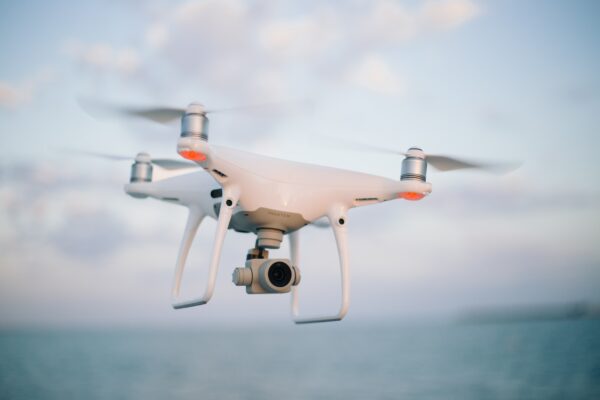
Josh Sorenson Unsplash
Do drones effectively minimise the risk of a shark bite?
Yes. Drones have proven to be an extremely effective tool in the detection of large sharks and other marine risks close to local beaches [1].
Drone surveillance enables patrollers to evacuate beaches when large bull, tiger and white sharks are within 200m of the beach. Drones are the main detection device that can be used in the right environment to prevent human/shark interactions before they occur.
A 2020 study found that the use of drones on coastal beaches was accepted by the majority of people surveyed (88%) due to perceptions of reduced impact on sharks, and the relatively low cost. [2]
Shark listening stations and tagging program
What are shark listening stations and tagging programs?
Shark listening stations are receivers deployed from the coastline that record and send out an alert in real-time when a tagged shark swims within 500m of the device. This alert is instantly sent out to nearby beach authorities (e.g. Surf Life Saving patrollers), and to anyone who receives the SharkSmart app or twitter alerts. Shark listening stations provide 24 hour active surveillance for tagged sharks in the area.[3]
Currently, any white, tiger or bull sharks that are caught and released alive are tagged and relocated. Shark listening stations work in partnership with an effective tagging program, as only tagged sharks are detected.
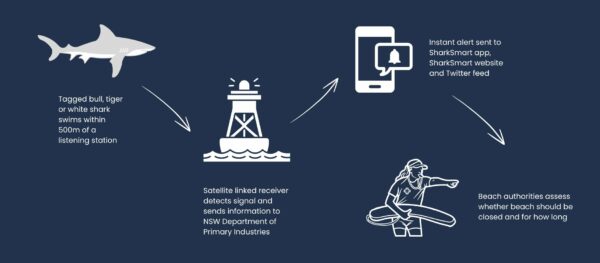
Do shark listening stations and tagging programs effectively minimise the risk of a shark bite?
Yes. Shark listening stations enable people to reduce the chance of encountering a shark up close and enable beach authorities to make better
informed decisions about when to close a beach because a large shark is present.
An effective tagging program plays a key role in this measure. In NSW, target sharks are tagged if they are found alive after being caught in shark nets or SMART drumlines. It takes an average of 74 days to re-detect a target shark that has previously been tagged and relocated, at a distance on average of 165 km from where they were first tagged.[4]
An effective tagging program requires a science-first directive, where scientists, not contractors, coordinate tagging activities. This is run in Western Australia where target sharks’ feeding opportunities (such as a whale carcass) are monitored by scientists for the opportunity to tag feeding sharks.[5] Western Australia does not use shark nets or SMART drumlines. As such, Western Australia run an effective tagging program using different measures.
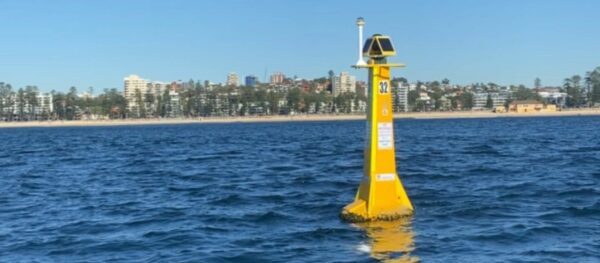
A shark listening station at Manly beach
In a 2021 shark management community preferences survey, the highest average score across NSW Coastal Councils was for shark listening stations linked to the SharkSmart app (with a score of 8.5/10).[6]
Shark smart education and Sharksmart app
What is shark smart education?
The Department of Primary Industries’ (DPI) community education program involves a mobile trailer that travels to beach based events, schools, community meetings and other key events and a free to use SharkSmart app.[7]
The SharkSmart app provides real-time shark alerts, information and resources for people using NSW ocean beaches. People can customise alerts based on time, region, type of alert, or by beach.[8]
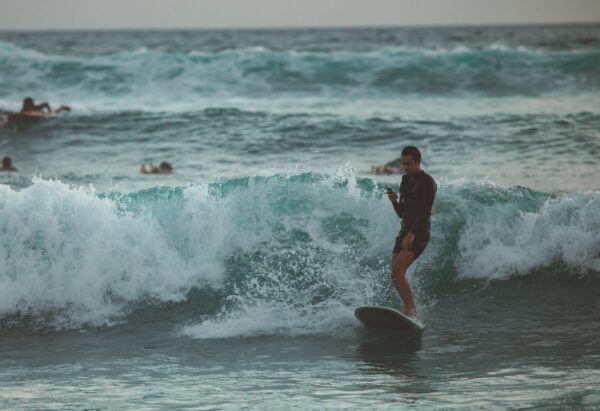
Roman Odintsov Pexels
Does shark smart education effectively minimise the risk of a shark bite?
Yes. Community education is considered the most effective form of shark bite risk reduction by shark management experts.[9]
Furthermore, community education remains one of the most popular means of shark management in NSW.[10]
Shark management alert in real time (SMART) drumlines
What are SMART drumlines?
A SMART drumline is a singular baited hook suspended from a buoy which is anchored to the seabed. An alert is sent out when an animal has been caught on that hook. Once an alert is triggered, a contractor responds within 30 minutes.
If a target shark is on the drumline, the shark is tagged before being released 1km offshore. Drumlines are set every morning approximately 500m offshore and are collected at the end of the day (weather dependent).[11]
Do SMART drumlines effectively minimise the risk of a shark bite?
There is no evidence indicating the presence of a SMART drumline impacts the rate of shark bites in a location. These devices are relatively expensive to operate and should be operated as a scientific device, not relied upon as a form of shark bite mitigation. When SMART drumlines are stringently monitored, they are a transitory step towards establishing an effective shark tagging program in NSW.
These drumlines have a substantially lower mortality than other fishing devices (such as shark nets),[12] provided that rapid response to alerts is maintained. However, these drumlines can pose an entanglement risk to migrating whales. Furthermore, other non-target marine life still become caught on these drumlines.
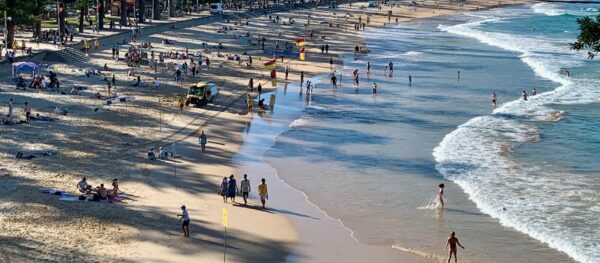
Jon Callow Unsplash
Personal deterrent devices
What are personal deterrent devices?
Personal deterrent devices are used by individuals to reduce the chance of a shark bite occurring. There is an emerging market for such devices. However not every device is to the same standard, and only independently-tested and verified devices should be encouraged.
Do personal deterrent devices effectively minimise the risk of a shark bite?
Yes, but only scientifically supported devices that have been independently verified. The Western Australian Government offers a rebate scheme for devices which meet a scientific threshold of their effectiveness. Currently, only devices from two brands meet this criteria: Ocean Guardian and Rpela. In extreme conditions (chummed and baited waters), the use of Ocean Guardian’s FREEDOM+ devices have been independently verified to reduce the chance of a shark bite from 96% to 40%.[13] Rpela devices have a tested 66% reduction of the probability of a shark bite occurring. [14] Most shark bites do not occur in ‘extreme’ conditions (designed to provoke a bite), but rather are mistaken identity,[15] or are ‘investigative’ bites.[16] These devices are tailored for swimmers, divers, surfers, boats and even larger barriers.
The market for personal shark deterrent devices is unregulated. There are various types of devices ranging from stickers to smelling wax and even electrical deterrents that have no independent scientific verification that they work as claimed. As such, there is a strong need for government regulation and guidance on which forms of personal deterrent devices are backed by independent scientific review to ensure people are not using an ineffective product.
While an effective shark management program includes a combination of each of the following measures, ultimately, no form of shark mitigation (be it personal or systemic) provides a 100% guarantee that an individual will never interact with a shark while in the water.
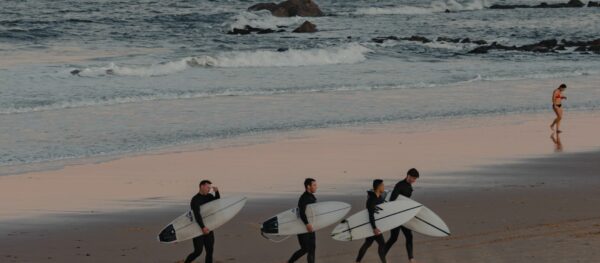
Caleb Smith Unsplash
References
- Cormac Purcell et al, ‘Assessing the ability of deep learning techniques to perform real-time identification of shark species in live streaming video from drones’ (October 2022) Frontier in Marine Science, pg 2, available here.
- Debra Stokes et al, ‘Beach-user perceptions and attitudes towards drone surveillance as a shark-bite mitigation tool’ (October 2020) Marine Policy, available here.
- Department of Primary Industries, SharkSmart, Tagged shark listening stations, https://www.sharksmart.nsw.gov.au/technology-trials-and-research#listening.
- Department of Primary Industries, SharkSmart, SMART Drumlines, https://www.sharksmart.nsw.gov.au/technology-trials-and-research/smart-drumlines.
- Western Australian Government’s Shark Smart Program, Shark Tagging, https://www.sharksmart.com.au/research/shark-tagging.
- NSW Government, Department of Primary Industries and University of Wollongong Australia (June 2021), Preferred Shark Mitigation Measures of NSW coastal councils and their communities, available here.
- Department of Primary Industries, SharkSmart, Education, https://www.sharksmart.nsw.gov.au/education;
Department of Primary Industries, NSW SharkSmart Community Education, https://www.youtube.com/watch?v=L6W5kvZPO2w. - Department of Primary Industries, SharkSmart, SharkSmart app, https://www.sharksmart.nsw.gov.au/sharksmart-app.
- Ferretti et al, ‘Reconciling predator conservation with public safety’ (August 2015) Frontiers in Ecology and the Environment, available here.
- NSW Government, Department of Primary Industries and University of Wollongong Australia (June 2021), Preferred Shark Mitigation Measures of NSW coastal councils and their communities, available here; Carol L Martin, ‘The social dimension to the New South Wales Shark Management Strategy, 2015-2020 Australia: Lessons learned’ (July 2022) Marine Policy, available here.
- Department of Primary Industries, SharkSmart, SMART Drumlines, https://www.sharksmart.nsw.gov.au/technology-trials-and-research/smart-drumlines.
- Rick Tate et al, ‘The Effectiveness of Shark-Management-Alert-in-Real-Time (SMART) drumlines as a tool for catching white sharks, Carcharodon carcharias, off coastal New South Wales, Australia’ (May 2021) Fisheries Management and Ecology p.496, available here.
- Charlie Huveneers et al, ‘Effectiveness of five personal shark-bite deterrents for surfers’ (2018), Peer J, available here.
- Craig Blount et al, ‘Effectiveness Against White Sharks of the Rpela Personal Shark Deterrent Device Designed for Surfers’ (September 2021) Journal of Marine Science and Technology, available here; see also here.
- Laura Ryan et al, ‘A shark’s eye view: testing the ‘mistaken identity theory’ behind shark bites on humans’ (2021) J. R. Soc. Interface, available here.
- Eric E.G Clua and Carl G. Meyer, ‘The ‘Mistaken Identity Hypothesis’ for shark bites on humans is an anthropomorphic fallacy’ (2023) Behaviour, available here.
